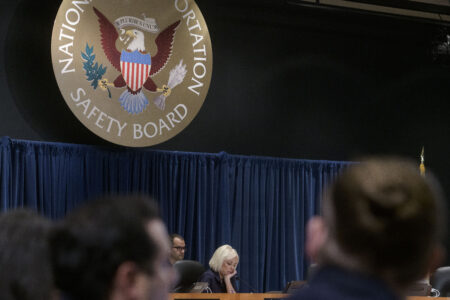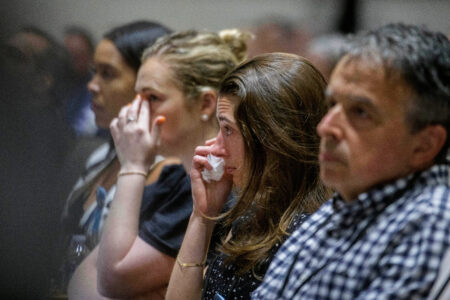U.S. Sen. Jerry Moran: D.C. aviation crash inquiry exposes FAA’s failure to mitigate risks
Topeka — U.S. Sen. Jerry Moran castigated the Federal Aviation Administration for failing to respond to warning signs and improve safety of airspace in the Washington, D.C., area before American Airlines flight 5342 and an Army Blackhawk helicopter collided in January.
Moran, a Kansas Republican who chairs the Senate Commerce Subcommittee on Aviation, Space and Innovation, said three days of National Transportation Safety Board hearings indicated unresolved staffing issues and a record of near misses were contributing factors in the Jan. 29 accident.
“Despite numerous warning signs of serious problems over the last several years, little was done to try and correct them, and these failures by the FAA, the Army and air traffic control cost 67 lives,” Moran said.
The airliner departed Wichita and fell into the Potomac River after slamming into the helicopter near the Ronald Reagan Washington National Airport, known as DCA.
“I know the last few days have been painful for the families of the victims, and I assure them that Congress will not let these failures go unanswered. We cannot undo the tragic loss of life, but we can work to make certain it never happens again,” the senator said.
During the hearings, federal investigators said air traffic controllers responsible for the busy airport were pressured to “make it work.” Former DCA tower operations manager Clark Allen said the system was “pushing the line” on safety.
FAA administrators said the national shortage of traffic controllers had to be considered. On the night of the midair collision, one DCA tower controller was handling both fixed-wing aircraft and helicopter traffic. Typically, two controllers divided that workload.
“The NTSB uncovered long-term staffing issues at the control tower that were compounded by a culture of distrust among DCA air traffic controllers and a toleration for unacceptable risks,” Moran said. “It is alarming that FAA failed to act on years of data and near misses indicating serious problems with the design of the mixed airspace around DCA.”
Before the accident, FAA staff said a concern had been raised about Army helicopters taking a route in proximity to commercial jet landings at the airport.
The Army helicopter involved in the collision flew above its ceiling of 200 feet, possibly due to an imprecise altimeter. The impact occurred at 278 feet and killed the three-person helicopter crew as well as 60 passengers, two pilots and two flight attendants on the American Airlines jet.




